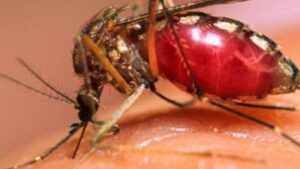Madagascar – 02 – Alert sanitari
Quali sono le epidemie attuali in Madagascar
Dall’11 agosto 2022 sono state revocate tutte le restrizioni relative al Covid-19 ai fini dell’ingresso nel Paese. Le varianti del virus anche a fine 2023 e nel primo trimestre 2024 continuano a circolare come nella maggior parte dei paesi di tutti i continenti. Le campagne vaccinali e le ripetute infezioni dal gennaio 2020 hanno consentito all’uomo di adattarsi alla presenza del virus e di rispondere con le proprie difese immunitarie. Nonostante questo stato di equilibrio tra virus ed organismo umano negli anziani, e nei portatori di patologie croniche il virus Sars-CoV-2 con le sue varianti può essere pericoloso e scatenare una reazione infiammatoria forte ed aggressiva. Opportuno eseguire i richiami vaccinali secondo le indicazioni fornite.
Dicembre 2023/Gennaio 2024 AUMENTANO I CASI DI DENGUE ANCHE IN MADAGASCAR

Dopo una prolungata siccità che ha colpito molte parti della “grande isola” durante la prima e la seconda parte dell’anno 2023, nell’ultimo trimestre 2023 e durante il mese di gennaio 2024 si è assistito al periodo di massima diffusione delle zanzare Aedes aegypti, il vettore delle arbovirosi presenti in Madagascar ed in particolare della febbre virale da Dengue. Questo è il periodo di maggiore rischio di contrarre la dengue sull’isola. E’ proprio durante l’estate australe, che va da ottobre a marzo, con il clima sempre più caldo, umido e piovoso, che aumentano le malattie a trasmissione da insetti.
Per quanto riguarda le specifiche aree geografiche… CLICCA QUI PER PROSEGUIRE
MALARIA aggiornamento febbraio 2024
La malaria è da sempre endemica in tutto il Madagascar e l’intera popolazione è considerata a rischio di contrarre la malattia. Il rischio presente in tutte le zone del paese, incluse le aree urbane, a tutte le altitudini e durante tutto l’anno. Tuttavia, il rischio è maggiore lungo le coste. Le città e le grandi città presentano un rischio di infezione talvolta uguale se non maggiore alle zone periferiche e selvagge.
I bambini e le donne incinte sono i gruppi più colpiti. In termini di stagionalità, il periodo di massima diffusione delle zanzare, e quindi di maggiore rischio di contrarre la malaria, è durante l’estate australe, che va da ottobre a marzo, quando il clima è caldo e umido. Per quanto riguarda le specifiche aree geografiche, la parte nord e le coste dell’isola sono le aree maggiormente interessate alla diffusione di zanzare Anopheles. Al contrario, gli altopiani, che rappresentano più di metà del territorio, sono meno colpiti dalla malaria.  Tuttavia, ci sono alcune eccezioni, come l’isola di Nosy Be, dove il rischio ……
Tuttavia, ci sono alcune eccezioni, come l’isola di Nosy Be, dove il rischio ……
CLICCA QUI per approfondire
Colera in Madagascar in aumento
10 FEBBRAIO 2024
Anche in Madagascar nell’ultimo semestre 2023 si è sviluppata una epidemia di colera in particolare nei sobborghi della capitale Antananarivo ed in altri villaggi, ed anche nell’altopiano malgascio e in diverse aree della costa. Grande attenzione sull’isola da parte delle autorità sanitarie dopo la grande epidemia del 1999.
La nuova epidemia, segnalata per la prima volta in Zambia nell’ottobre 2023, ha raggiunto 13 paesi dell’Africa orientale. In particolare Tanzania e Isole Comore, hanno visto una diffusione importante di casi di colera. La malattia si sta diffondendo

nuovamente anche in Madagascar.
Situazione epidemiologica:
per evitare una nuova diffusione di casi di colera il Madagascar segue da vicino le epidemie di colera che si sono diffuse in vari paesi vicini, in particolare sulla costa orientale
CLICCA QUI PER APPROFONDIRE
MARZO 2023 Morbillo
Come in molti paesi Africani si mantiene elevato il numero dei casi di morbillo denunciati in molte province del paese.
Madagascar – 02 – Alert sanitari Leggi tutto »




 aumento fino alla
aumento fino alla

